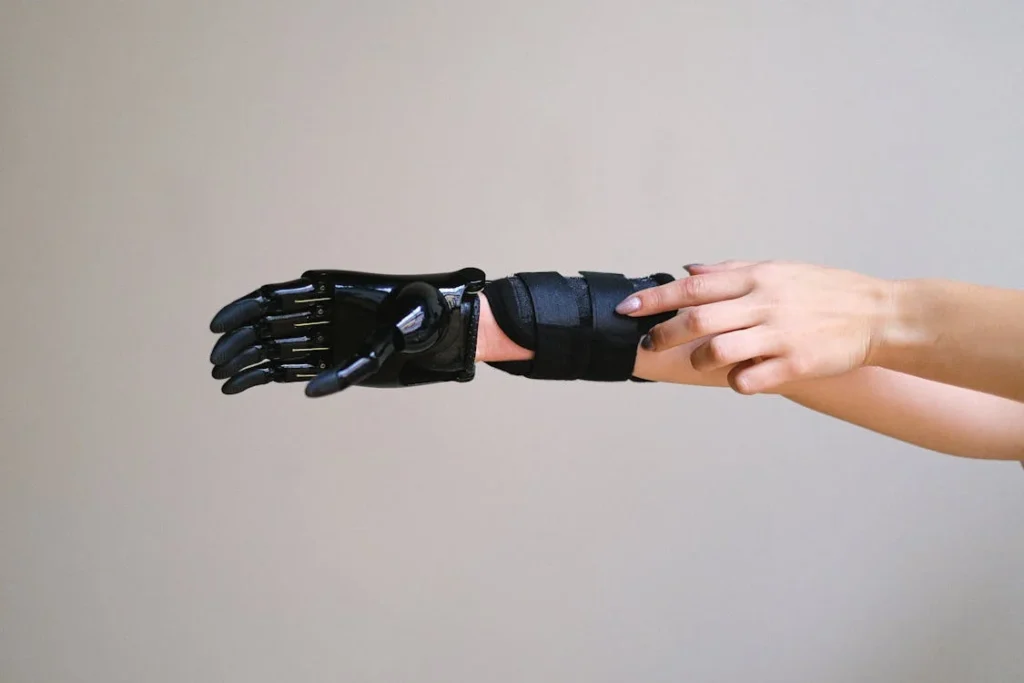Recovery after losing a limb is never easy. It’s not just about healing the body. It’s also about healing the heart, the mind, and the spirit. For many people, the journey back to feeling like themselves again can feel long and lonely. But what if recovery didn’t have to be so hard? What if it could feel exciting, playful, and full of little wins every day?
That’s exactly what we believe at Robobionics.
We didn’t just build Grippy™ to help people move again. We built an entire experience around it—one that brings joy back into recovery. Our Gamified Rehabilitation App is more than just an app. It’s your personal coach, cheerleader, and progress tracker all rolled into one. It helps users practice using their prosthetic hand with simple, fun exercises that feel more like games than therapy.
This app was made for people, not patients. It’s designed with care, built in India, and tested with real users who helped shape every part of it. And just like Grippy™, it’s here to make sure no one has to face this journey alone.
Let’s dive into how it works, why it’s so powerful, and how it’s changing the way people recover—one tap at a time.
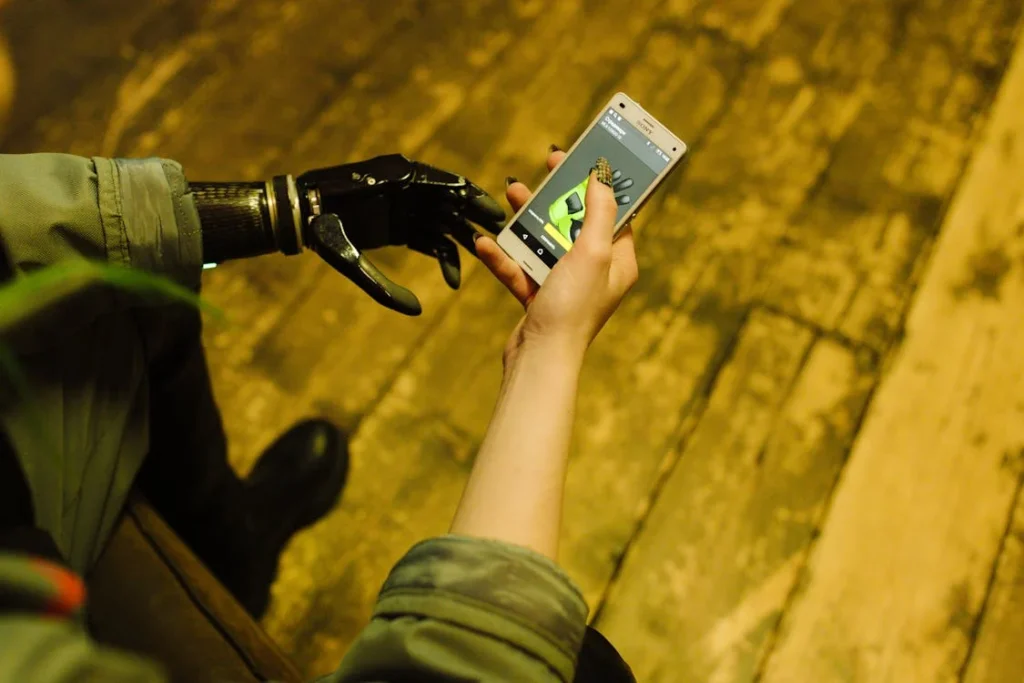
Why We Made the App: The Problem With Traditional Recovery
Therapy Doesn’t Have to Be Boring
Most people don’t talk about this part, but after someone gets a prosthetic hand, the hard work is just beginning. The body needs time to get used to it. The brain needs to learn new ways to send signals. And the person needs to relearn how to do simple things like hold a spoon, button a shirt, or pick up a coin. These tasks may sound small, but they take effort and time—and honestly, the process can feel frustrating and slow.
We kept hearing the same thing from users during testing. The therapy felt too serious. Too technical. Too long. People would start strong but then stop practicing because it just didn’t feel rewarding. One user told us it felt like going to the gym every day and never seeing results. Another said she felt like she was just being tested over and over, not helped.
That’s not what recovery should feel like. We believe therapy should be encouraging. It should celebrate small wins. It should give people a reason to smile while they’re learning. That’s where the idea for our app began.
The Power of Play in Healing
Children learn by playing. They explore the world with joy, with curiosity, and with a sense of adventure. Somewhere along the way, we forget that play can still teach us. When we designed the Robobionics App, we decided to bring back that sense of play. Not childish play—but joyful, meaningful challenges that make you want to try again, even if you don’t get it right the first time.
Using a prosthetic hand takes practice. It’s about building muscle memory, learning new movements, and gaining control one motion at a time. We wanted to create a space where people could do all of that—without even realizing they were in therapy.
Our app turns therapy into a game. You don’t just “move your fingers.” You catch falling fruits. You squeeze virtual objects to the perfect strength. You complete missions that make your progress feel like a story unfolding. Every action, every level, every sound is designed to cheer you on. Because when recovery feels like fun, people stick with it. And when they stick with it, they get better—faster.
Made for Every Kind of User
From the very start, we knew this app couldn’t be one-size-fits-all. Recovery is different for everyone. Some people are just starting out, still getting used to their Grippy™ hand. Others are further along, mastering advanced tasks and looking for ways to refine their control. That’s why we built the app to adapt.
It learns from your movements. It sees how strong your muscle signals are. It notices what you’re struggling with. And then, quietly in the background, it adjusts the difficulty just enough to keep you improving without making you feel overwhelmed.
We worked closely with prosthetists, therapists, and real users to get this right. We didn’t want anything that felt too medical or robotic. The interface is friendly, the graphics are clean and colorful, and the sounds are soft and positive. Even the rewards—like stars, badges, and unlockable levels—are there to give you that little boost of “yes, I can do this” every single day.
Not Just a Tool, But a Companion
Here’s the truth: a lot of people feel alone during recovery. They may not want to ask for help. They may not have someone cheering them on at every step. That’s why our app isn’t just a tool. It’s a companion.
It checks in with you. It tracks your progress over time so you can see how far you’ve come. It remembers the small victories—the first time you held a cup, the first time you completed a full level—and reflects them back to you. It shows you that you’re growing stronger every day, even when it doesn’t feel like it.
There’s something powerful about being able to look back and say, “Last month, I could barely do this. Now I can.” That shift in mindset—from frustration to pride—makes all the difference.
The app also helps therapists and caregivers stay in the loop. With your permission, they can view your progress, understand your challenges, and adjust your physical therapy sessions accordingly. This means you’re not just getting better—you’re getting smarter, more focused support that meets you exactly where you are.

How the App Works: Turning Practice Into Progress
Simple Start, Big Impact
When someone first opens the Robobionics app, we want them to feel welcome. No confusing buttons. No long instructions. Just a friendly, colorful home screen that gently invites you in. You begin by connecting your Grippy™ hand using Bluetooth, and within seconds, the app starts responding to your muscle signals.
That’s where the magic begins.
Instead of diving straight into tasks, the app first gets to know you. It watches how your muscles move. It listens to your signals. It learns your rhythm. This setup phase is quiet and gentle, but it’s incredibly important. By understanding how your body naturally moves, the app builds a custom journey that fits you perfectly—not too fast, not too slow.
Many users say they feel an instant connection. Like the app “knows” them. That’s because we designed it to do just that. It doesn’t just respond to your body—it responds to you.
Games That Train Without Feeling Like Work
Once you’re set up, the app introduces you to your first challenge. But instead of calling it a therapy task, it simply feels like a game. For example, you might see virtual balloons floating up on the screen. Your job? Use your Grippy™ hand to “pop” the balloon by making a gripping motion. The better your control, the more balloons you pop. And just like that, you’re building strength, practicing control, and improving your reflexes—without even thinking about it.
Each game is designed with a purpose. One might help you improve your grip strength. Another focuses on wrist rotation. Another encourages faster response times. But they all have one thing in common: they’re fun. They feel like play. And they offer just the right mix of challenge and reward to keep you coming back.
As you level up, the games evolve. You might be catching virtual apples from a tree, squeezing objects with just the right pressure, or navigating a small maze by rotating your wrist. These aren’t random activities. Each one maps directly to real-world movements—turning a key, holding a bottle, typing on a keyboard. So as you play, you’re also preparing for real life.
Feedback That Feels Human
One of the most powerful parts of the app is how it talks to you. Not in a robotic voice, but with warmth and care. After each session, the app gives you feedback that feels personal. It doesn’t say “failure” or “wrong.” It says, “Great try!” or “Almost there!” or “You’re getting better every day.”
This may sound small, but it’s huge. Recovery is emotional. Every small step can feel like a big deal. So we made sure the app celebrates with you—always. And if you’re having a tough day, it gently adjusts. Maybe the game slows down. Maybe it offers a simpler level. Maybe it just reminds you that tomorrow is another chance to try again.
The app never judges. It never pushes too hard. It simply walks beside you, every step of the way.
Tracking Progress in a Way That Feels Encouraging
Progress matters—but how you see progress matters even more. We built a tracking system that’s visual, easy to read, and deeply motivating. Instead of charts filled with medical terms, you get a clean timeline showing your daily wins, your longest streak, your top scores, and how your control has improved over time.
You can go back and see the exact moment when something “clicked.” Maybe it was your tenth day in a row of practice. Maybe it was the first time you completed a level without missing a beat. These moments become part of your recovery story—a story that grows stronger every time you open the app.
There’s also a daily check-in feature that lets you log how you’re feeling. Not just physically, but emotionally too. Are you tired today? Frustrated? Energized? The app remembers these patterns and offers gentle suggestions—like a shorter game session if you’re feeling low, or a more challenging one if you’re feeling strong. This makes recovery feel more human, more thoughtful, and more connected.
A Tool That Grows With You
What makes the Robobionics app truly special is how it grows with you. In the beginning, it’s all about building comfort and confidence. Later, it starts pushing you a little more. It introduces more complex challenges. It offers feedback based on deeper patterns in your movements. It starts feeling less like a helper, and more like a smart coach who knows exactly what you need next.
Some users stick with the app for months, even after they’ve mastered basic control. Why? Because they enjoy it. Because it still teaches them. Because it feels like part of their daily routine—like brushing their teeth or stretching before bed. And that’s the goal. We don’t just want people to use the app. We want them to love it.
We’ve even seen people start competing with themselves—trying to beat their own scores, or improve their grip speed by just a few milliseconds. That’s the kind of self-driven motivation that leads to real, lasting improvement.
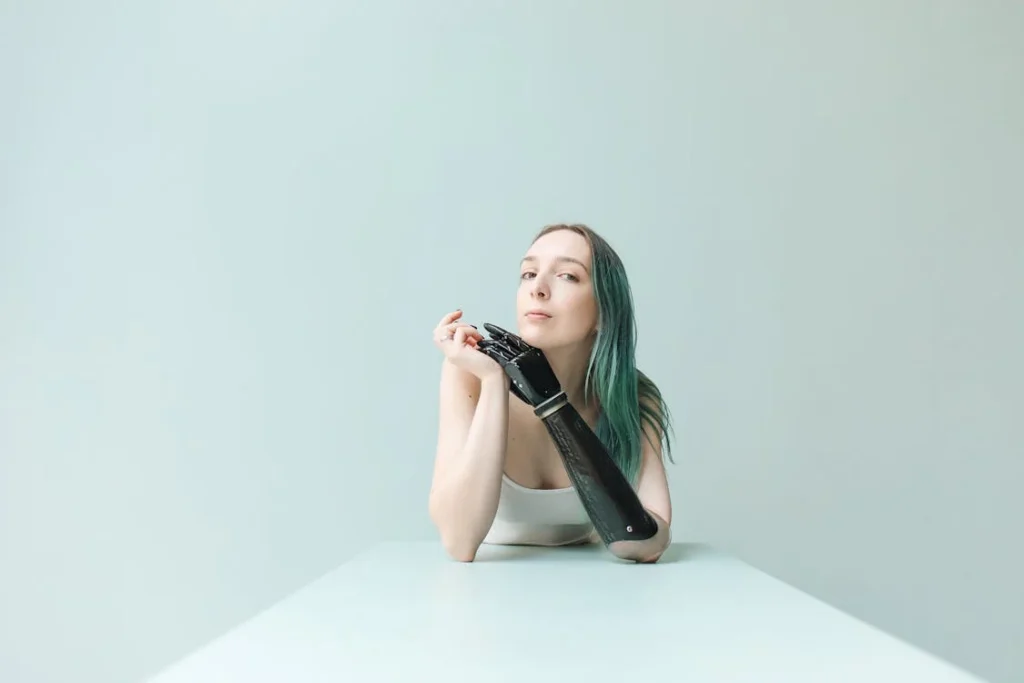
The Human Side of Technology: Real Stories from Real Users
It’s Not Just About Movement—It’s About Confidence
Behind every download of our app, there’s a story. A person. A family. A dream to live life fully again.
When we built the Robobionics Gamified Rehabilitation App, we didn’t imagine just numbers on a screen. We imagined someone holding their child’s hand again. Someone picking up a pencil for the first time in years. Someone being able to cook their favorite dish without asking for help. These stories are the reason we wake up every morning and keep improving what we build.
Take Anjali, for example. She lost her right hand in an accident and thought her days of working as a teacher were over. The idea of using a prosthetic scared her. She didn’t feel like herself. But once she was fitted with a Grippy™ hand and introduced to our app, something shifted. At first, she was hesitant. Technology wasn’t her strong point. But after just a few days, she was smiling through her therapy sessions, beating her scores, and slowly regaining strength. Within two months, she was back in the classroom, writing on the board with her students cheering her on.
Her story isn’t rare.
We’ve heard from users in small towns, big cities, and remote villages. Young children who use the app like a game. Older adults who never thought they’d adapt to something so new. One gentleman even told us he looks forward to his “play time” every evening—when he sits with his grandkids and they help him beat a new level. What was once therapy became family bonding.
Designed With Love, Built With India in Mind
There’s something deeply personal about using your hand again after losing it. We understand that. That’s why everything about this app, just like our Grippy™ bionic hand, is made with love and care—right here in India.
We didn’t just translate a foreign app or copy an imported idea. We started from scratch, working with Indian therapists, engineers, prosthetic users, and families. We listened to their needs. Their language preferences. Their hopes. Their fears.
That’s why the app is available in multiple Indian languages. Why the colors are bright but calming. Why the voice instructions are clear and friendly, not robotic. Why the games don’t assume you’ve used fancy devices before. It’s built for real people, in real homes, in real Indian communities.
Even the app’s offline mode—where users can continue their training without an internet connection—was added after we visited users in rural areas who told us they often lose network. Recovery shouldn’t pause because of a weak signal. So we made sure it doesn’t.
Family, Friends, and Support That Stays Close
Healing doesn’t happen alone. That’s why we included features in the app that make it easy for caregivers, friends, or therapists to stay part of the journey.
There’s a sharing mode that lets a loved one log in and see how the user is doing. They can view progress charts, daily activity, and even leave encouragement messages like “Proud of you!” or “Keep going, champ!” These small gestures mean a lot. They remind the user that someone is rooting for them.
Therapists love this too. One clinic told us that before using our app, they had to rely on users’ memory or short notes about what happened at home. Now, they can see real-time data about hand control, muscle signal strength, and user activity. This means more focused, more productive therapy sessions—and better outcomes.
We’ve even seen users form their own small communities. Through our social features and offline meetups, many users have connected with others going through similar journeys. They swap tips, compare scores, share stories, and sometimes just laugh about how bad they were at a certain game when they started.
Restoring More Than Function—Restoring Dignity
Let’s be honest. When someone loses a limb, they often lose more than movement. They can lose their sense of control, their confidence, their belief that they’ll ever feel “normal” again. That’s why our app isn’t just about training muscles. It’s about restoring dignity.
The ability to move your hand again—on your own terms, at your own pace, in your own space—is powerful. When users play a game and win, they don’t just smile because of the score. They smile because they did that. Because their body, their effort, their progress made that happen.
One of our users, Ravi, said it best. “The app made me feel like a person again. Not a patient. Not someone who needs help all the time. Just a guy who’s getting stronger every day.”
That’s the heart of everything we do at Robobionics.
We’re not just building prosthetic hands. We’re building tools that bring back hope. We’re creating ways for people to laugh, to learn, and to live again—with pride, strength, and a whole lot of heart.
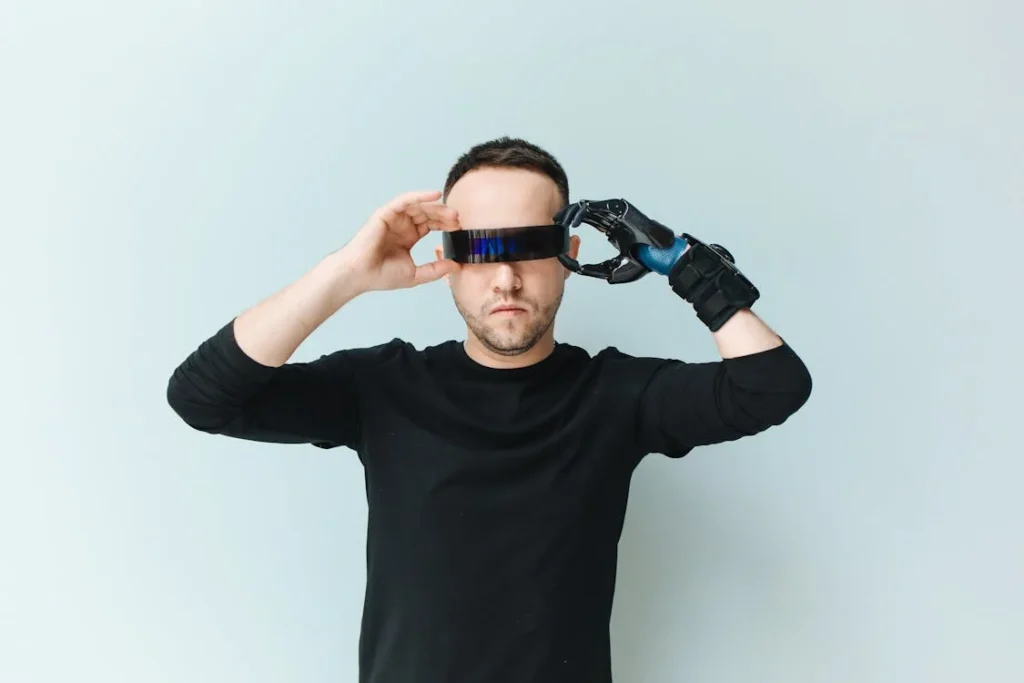
Why It Works: The Science Behind Fun and Function
The Brain Learns Best When It’s Having Fun
There’s a powerful secret behind our app’s success—it taps into how the brain naturally learns. You see, the human brain isn’t wired to learn through pressure or stress. It grows best when it feels safe, curious, and motivated. This is why play works so well, even for adults. It creates a safe space where people can try, fail, and try again—without fear, without shame, without judgment.
Our app is built on this idea.
Every time you play a game in the Robobionics app, your brain is making new connections. It’s learning that when you move your muscle a certain way, something good happens—a balloon pops, a fruit gets caught, a level is completed. These small moments of success trigger a reward signal in your brain. It releases a chemical called dopamine. That’s the same “feel-good” chemical we get when we laugh, win a game, or hear a compliment.
This dopamine isn’t just about making you feel happy—it also helps the brain remember what worked. So when the app encourages you, when it celebrates your progress, it’s not just being nice. It’s helping you learn faster and more deeply.
This is what makes the app so effective. It’s not just giving you tasks. It’s training your brain to enjoy movement again. And when you enjoy something, you’re more likely to stick with it. Day after day. Week after week. Until the movements become second nature.
Muscle Memory That Lasts
When you first start using a bionic hand like Grippy™, your muscles may feel confused. They haven’t done this before. They’re not sure how much to move, when to tense, or how to relax. The app helps your muscles learn all of that, slowly and steadily.
Every game is carefully designed to train a specific skill. One level may teach you how to open your hand smoothly. Another may help you learn the right grip strength. Over time, your body remembers these patterns. This is called muscle memory.
It’s like learning to ride a bicycle. At first, it’s wobbly. You overthink every move. But with practice, your body just “gets it.” You stop thinking. You just do it. That’s what the Robobionics app does—it helps your hand and your brain build new habits that stick.
What’s even better? The app adjusts itself based on your signals. If it notices your muscle strength is improving, it increases the difficulty slightly. If you seem tired, it pulls back. This balance keeps your progress steady without burning you out.
Daily Use, Real-Life Results
Consistency is key in any kind of recovery. But it’s hard to stay consistent with something that feels boring. That’s where our app shines. By turning every session into a fun challenge, it encourages people to come back every day.
And when users come back daily, they improve faster.
Over the months, we’ve seen users go from barely opening their prosthetic hand to cooking meals, writing notes, and shaking hands. One user, Shashank, told us he started using the app while lying in bed—just five minutes a day. Then it became ten minutes. Then twenty. And before long, he was carrying groceries, tying his shoelaces, and even cutting vegetables—all with his Grippy™ hand.
These aren’t just milestones. They’re moments of freedom. Of independence. Of confidence.
And it all started with a game.
Guided by Experts, Backed by Science
We didn’t build this app in a bubble. Everything inside it—from the way the games are structured to the way feedback is delivered—was shaped with the help of physiotherapists, neuroscientists, occupational therapists, and prosthetic experts. We listened to their advice. We studied their methods. And we brought their wisdom into every screen, every sound, every motion.
Many therapists now use the app as part of their formal rehabilitation plans. It helps them extend therapy beyond the clinic. Instead of waiting for weekly visits, users can now practice every day at home—with support, feedback, and motivation right in their pocket.
This kind of blended therapy—combining clinic sessions with daily app practice—is proving to be one of the most effective recovery models. It reduces the time needed to build control. It improves long-term outcomes. And most importantly, it puts the power of progress into the user’s hands.
Recovery That Feels Like Life, Not Just Therapy
Sometimes, therapy can feel like a job. You show up. You do the work. You check the boxes. But life isn’t like that. Life is messy. It’s emotional. It’s full of surprises. And real recovery needs to reflect that.
That’s why the Robobionics app is different.
It doesn’t treat you like a patient. It treats you like a person. It respects your ups and downs. It gives you space to grow, fall, and grow again. It wraps serious training in a gentle, playful shell that feels more like daily life than a hospital room.
And maybe that’s the biggest reason why it works.
Because healing isn’t just about getting back what you lost. It’s about building something even stronger, even brighter, and even more joyful than before.
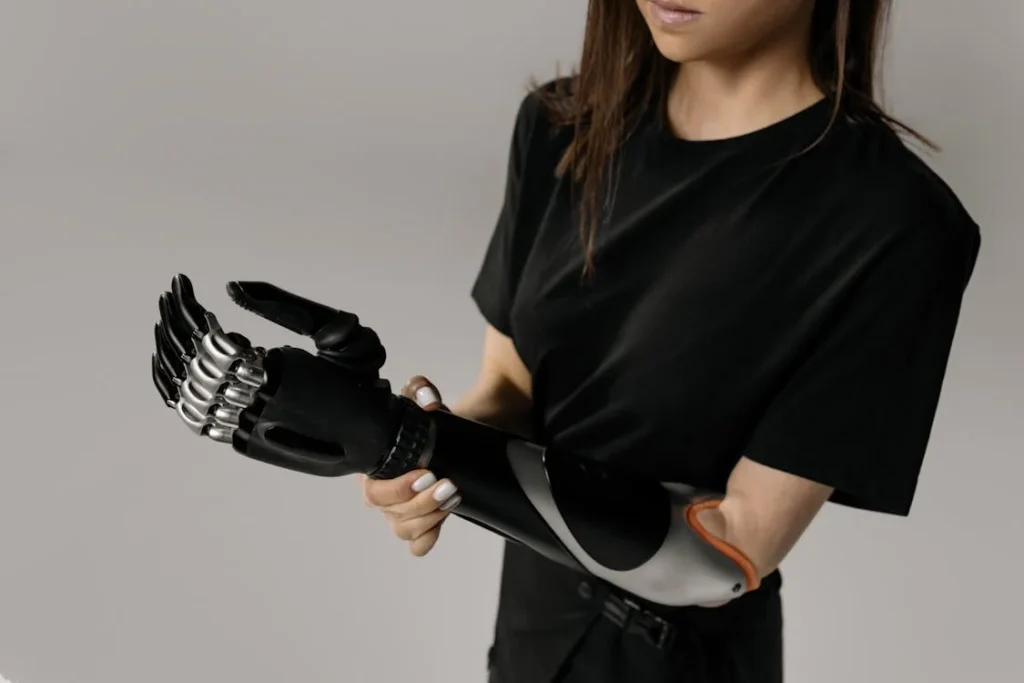
What Makes It Different: Standing Out in a Crowded Market
Most Apps Focus on Data. We Focus on the Person.
There are many rehabilitation tools out there—some developed by big international brands, others by tech companies entering the health space. Most of them are built with impressive technology. They use advanced sensors, smart dashboards, and detailed data tracking. But here’s the thing: people recovering from limb loss aren’t just looking for tech. They’re looking for something they can connect with. Something that understands them—not just their body, but their heart and emotions too.
That’s where the Robobionics app stands apart.
We don’t just track your muscle activity or measure your range of motion. We pay attention to how you feel. Our app checks in with your energy. It offers encouragement on tough days. It keeps things light when you need a break and gently nudges you when you’re ready for more. It learns you—not just your movements, but your moods, your rhythm, your motivation.
This human-first approach is rare in tech. And it’s exactly what makes our app work—not just for today, but for the long run.
Fully Integrated With Grippy™ for Seamless Control
The Robobionics app was built specifically for our Grippy™ Bionic Hand. That means every single feature is tailored to support real movements that Grippy™ users perform. Unlike other third-party rehab apps that try to be compatible with everything, our app is made to feel like an extension of the hand itself.
When a user grips or opens their Grippy™, the app responds instantly. The connection is smooth, with zero lag or confusion. That immediate feedback builds trust. It gives users confidence that their hand and their mind are in sync. And that trust speeds up recovery more than any feature alone ever could.
Even better, because we built both the hardware and the software, we can keep improving both together. New features in the hand? The app supports them. New types of grip or feedback? The app knows how to train them. This kind of harmony is something most platforms simply can’t offer.
No Extra Cost, No Hidden Fees
Let’s talk about something that often gets swept under the rug—pricing.
In the world of bionics and rehab, most advanced apps come with monthly subscriptions or hidden charges. Users often buy a prosthetic limb only to realize that to actually train with it, they need to pay extra for app access, updates, or cloud storage. This can be frustrating, especially when someone has already spent a lot just to get the device.
At Robobionics, we don’t believe in that.
Our app comes free with every Grippy™ hand. No extra fees. No expiry. No surprise subscriptions. If you have a Grippy™, you have full access to the app—forever.
Why? Because we see it as a right, not a luxury. Recovery shouldn’t be gated by payment screens. It should be open, accessible, and designed to support every user, no matter where they’re from or what their budget is.
This decision wasn’t just business—it was personal. We’ve met too many families who saved up everything just to afford a prosthetic. We didn’t want them worrying about software costs on top of that. We wanted them to focus on one thing only: getting better.
Offline Mode for Rural and Low-Connectivity Areas
India is beautifully diverse. But internet access isn’t equal everywhere. In many villages and smaller towns, stable connections are still a challenge. We didn’t want that to become a barrier to recovery. So we built an offline mode.
This means once the app is installed, users can play, train, and track progress without needing to be online. All their scores and movement data are stored safely on the device and sync automatically the next time they connect to Wi-Fi. This simple feature opens the door to thousands of users who might otherwise be left behind.
We’ve seen this in action—like in rural Maharashtra, where one user trains with the app in the fields during breaks, then syncs his data at home in the evening. Or in remote parts of the Northeast, where clinics download the app for users on shared devices and help them train without needing constant network access.
This isn’t just about convenience. It’s about inclusion.
Made in India, Made With Pride
Too many of the prosthetic tools available in the Indian market today are imported. They’re expensive. They’re built for different body types, different cultures, different climates. Often, they break under heat, don’t fit well, or feel awkward to use.
Robobionics is different.
We’re based right here in India. Our team works on the ground, hand-in-hand with users, therapists, and clinics. We understand the terrain, the language, the challenges. We don’t guess—we listen. And we build accordingly.
This app is no exception. Its voiceovers are recorded in familiar Indian accents. Its tutorials are easy for people of all education levels to follow. Its design reflects our colors, our energy, and our spirit. This is a tool built not just in India—but for India.
And honestly? That’s our biggest advantage.
Because no one cares about our people like we do. No one else is building with this much love, understanding, and commitment to making high-tech recovery simple, joyful, and truly accessible.
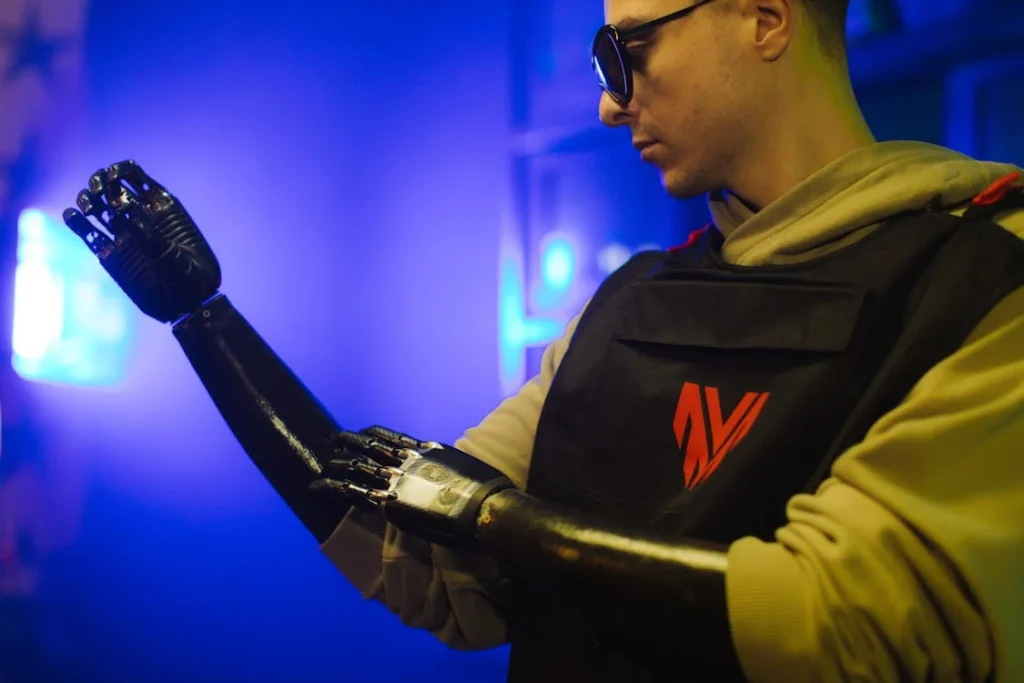
Beyond the App: Bridging the Gap Between Therapy and Daily Life
From Training to Living—The Transition That Matters Most
When someone starts using a bionic hand, the goal isn’t just to move fingers or open and close a grip. The real goal is life—life in its full, messy, beautiful routine. Holding a toothbrush. Pouring tea. Typing a message. Pulling on socks. These small moments may seem ordinary, but for someone with a limb difference, they are huge victories.
The Robobionics app goes far beyond just helping users play games or practice isolated movements. It gently guides them toward rebuilding the skills that actually matter in real life. The kind you don’t think about—until you can’t do them anymore.
In fact, the deeper you go into the app, the more real-world scenarios it introduces.
Let’s say you’ve mastered the basic grip training. The app might introduce a “morning challenge” where you simulate brushing your teeth or lifting a mug. Not through just a game, but through guided simulations that mirror the way you’ll do those tasks at home. The visual cues, the timed feedback, the muscle prompts—they’re all designed to help you not just move, but use your bionic hand in the way it was meant to be used: to live.
And that’s where the app truly shines.
Relearning Independence, One Routine at a Time
Many users tell us the hardest part of recovery isn’t the therapy itself—it’s the quiet moments at home when they try to do something they once did easily, and now it feels impossible.
That’s where our app steps in as a bridge. It doesn’t just give you games to play—it helps you rehearse your real life.
In the “daily life” modules, you’ll find interactive sessions designed around simple tasks like tying shoelaces, holding a pen, unlocking a door, or peeling a banana. These aren’t random simulations. They are shaped from hundreds of hours spent watching and listening to users describe what makes them feel most human.
We worked with occupational therapists to ensure that these tasks follow natural movement patterns and common daily needs. That way, users can practice in a safe, pressure-free digital environment—and then feel confident when they try it in the real world.
Over time, these tiny routines start to feel less like obstacles and more like habits again. And every success—no matter how small—adds up to something big: independence.
Helping the Mind Catch Up With the Body
Physical recovery is only half the journey. Emotional recovery takes just as much effort—and just as much care.
Many users struggle with anxiety around everyday tasks. What if the glass slips? What if I press too hard and break something? What if I fumble and someone sees me? These thoughts aren’t just distractions—they’re real barriers that stop people from using their prosthetic hand freely.
The Robobionics app was designed to gently undo that fear.
By letting users try, repeat, and master daily tasks in a judgment-free space, it helps rebuild not just strength—but trust. Trust in the device. Trust in the body. Trust in the self.
Over time, this trust becomes courage. And that courage turns into action.
We’ve seen users go from hesitating to open a door, to confidently chopping vegetables for dinner. One young man told us he used to hide his hand in his pocket during social events. Now, thanks to the app and the comfort he built using it, he reaches out first for handshakes.
That kind of change? That’s what this journey is all about.
Care That Doesn’t Stop When the App Closes
One of the most unique features of the Robobionics app is its “carryover coaching”—a smart system that keeps guiding users even after their practice session is over.
Here’s how it works.
After a training session, the app may recommend one real-life task to try that day. Something manageable, based on what you just practiced. For example, if you’ve been working on grip strength, the app might say: “Try holding a toothbrush while brushing tonight.” Or if you’ve been training wrist rotation, it might suggest: “Open your water bottle using your Grippy™ hand today.”
These gentle nudges help users bridge the gap between therapy and everyday life—without overwhelm, without pressure.
And because the app tracks these little moments, it helps users build a routine of independence. One day at a time. One task at a time. Until life starts to feel like life again.
Conclusion
Recovery isn’t just about movement—it’s about meaning. At Robobionics, we believe that healing should feel human. Our Gamified Rehabilitation App is more than a tool. It’s a partner. A quiet guide. A reason to smile, try again, and feel proud every step of the way. With every level cleared and every small task mastered, our users are not just learning to use their Grippy™ hand—they’re reclaiming their lives. They’re brushing their own teeth, holding their children’s hands, cooking meals, and stepping into the world with confidence again.
And that’s the magic. Not just better therapy, but better living. If you or someone you love is on this journey, we’re here to help—every tap, every grip, every moment.
Ready to experience it for yourself? Book a free demo here. Let’s make recovery joyful—together.



